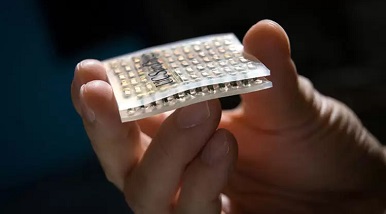
The book 200 Years of Themoelectricity (1821-2021) has just been published by Springer, celebrating, albeit a bit late, the bicentennial of the discovery of thermoelectricity. This volume republishes around thirty works that have shaped the history of thermoelectricity over these two centuries, along with three essays on the historical and scientific development of the discipline.
But what is thermoelectricity, and what is it used for? We discussed it with one of the editors, Dario Narducci, professor at the Department of Materials Science of the University of Milano-Bicocca.
«Thermoelectric phenomena were the first studied example of coupling between fluxes and thermodynamic affinities, and even today, they are a key tool for studying non-equilibrium thermodynamics. However, thermoelectricity also has significant practical applications. The most well-known is certainly in metrology – thermocouples for temperature measurement. However, using thermodynamic terminology. thermoelectric devices are also heat engines and refrigerators, so they find applications in converting heat into electrical energy and for heat extraction.»
However, it doesn’t seem that these devices have found widespread practical applications. «That’s not entirely true,» Narducci counters. «In space probes traveling through deep space, thermoelectric generators have been the go-to powering technologies. There wouldn’t have been missions like Viking or Pioneer without thermoelectrics. However, it’s true that commercial applications for heat recovery are minimal.»
Is this due to competition with other technologies? «Exactly. For a thermoelectric material to be efficient, it should have high electrical conductivity and low thermal conductivity – all with a low carrier density. Essentially, an impossible material.» And then? «Then materials science faced such a challenge giving its best – by engineering defects, and since the late 1990s, by making extensive use of nanotechnology. The result, widely reported in the book, has been a significant increase in efficiency, pushing thermoelectric materials beyond the threshold of commercial competitiveness.»
Any examples? «Well, while heat recovery with thermoelectric generators has yet to find its killer application, thermoelectric devices (often called Peltier coolers) have already entered our homes, even if we might not know it, working alongside conventional compressors in high-efficiency home fridges. But the most promising frontier is certainly high-efficiency computing. The heat generated by servers running AI applications must obviously be dissipated, and more than half of the electrical power consumed by data centers goes into cooling, not computing.» And what can Peltier devices do? «They can operate in a smart way, activating when and where CPUs need them – only there and only then.» What about efficiency? «It’s not just about efficiency but also about the rational use of electric power by coolers. A Peltier can be switched on and off in less than a second, which other cooling systems cannot do.» So, saving energy? «Exactly. Which is, after all, another way to reduce the environmental impact of technology. Because, of course, the greenest energy is the energy we don’t use.»